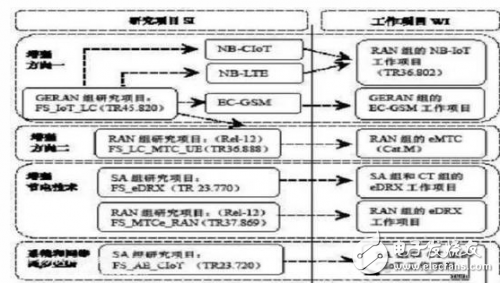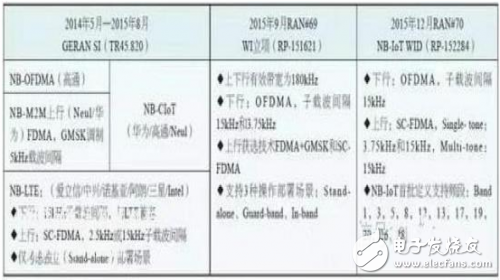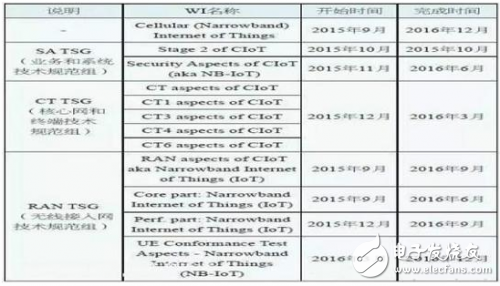NB-IoT is a comprehensive product of technological evolution and market competition. As the future market is consistently optimistic, equipment manufacturers have fiercely competed for market share in the standard-setting process, but the expected performance indicators are still basically the same, and the standards are still Accelerated development.
2. Background of NB-IoT technology 2.1 Classification of Internet of Things communication technologyThere are many kinds of Internet of Things communication technologies, which can be divided into two categories:
One type is short-range communication technology, which represents Zigbee, Wi-Fi, Bluetooth, Z-wave, etc. Typical application scenarios such as smart home;
The other type is WAN communication technology. The industry is generally defined as LPWAN (Low Power WAN), and typical application scenarios such as smart meter reading.
LPWAN technology can be divided into two categories: one is technology that works in unlicensed frequency bands, such as Lora, Sigfox, etc. Most of these technologies are non-standard and custom implementations;
One type is technology that works in licensed frequency bands, such as GSM, CDMA, WCDMA and other mature 2G/3G cellular communication technologies, and LTE and its evolution technologies that are gradually deployed and supported to support different category types. Standard definitions have been made in international standards organizations such as 3GPP (mainly developing standards related to GSM, WCDMA, LTE, and its evolution technologies) or 3GPP2 (mainly CDMA-related standards).
NB-IoT is a new narrowband cellular communication LPWAN technology proposed by the 3GPP standards organization in September 2015.
2.2 Development of 3GPP MTC TechnologyBefore the introduction of NB-IoT, the industry recognized the development trend of IoT Internet of Everything in the future. The prospect of M2M communication is also regarded as an important opportunity for the standard ecological growth of 3GPP. In the era of the Internet of Everything, it has low cost, low power consumption and wide The coverage and low-rate LPWAN technology will play an important role, so 3GPP has also been promoting the development of related machine-like communication MTC technology, and is mainly focused on two directions.
Direction 1: Facing non-3GPP technical challenges, carry out further research on GSM technology and research on new access technologies.
For a long time, the Internet of Things services of 3GPP standard operators mainly rely on low-cost GPRS modules. However, due to the emergence of new technologies such as Lora and Sigfox, the traditional advantages of GPRS modules in terms of cost, power consumption and coverage are threatened, so in 2014 At the GERAN #62 meeting in March, 3GPP proposed the establishment of a new research project “FS_IoT_LC†to study the feasibility of evolving GERAN systems and new access systems to support lower complexity, lower cost, lower power consumption, and stronger Enhanced features such as coverage.
Direction 2: Consider the future replacement of 2G/3G IoT modules to study low-cost, evolved LTE-MTC technology.
After entering the LTE and evolution technology development phase, 3GPP also defines a number of terminal types that can be applied to different service demand scenarios of the Internet of Things. The Rel-8 version has defined terminal types of catogery 1-5 at different rates. In later versions, in the evolution of the version, The new definition supports high-bandwidth, high-speed catogery 6, catogery 9 and other terminal types, as well as a new low-cost catolery 0 (Rel-12) terminal type that supports lower power consumption. Based on Cat.0, in the RAN #65 conference in September 2014, 3GPP proposed the establishment of a new SI "LTE_MTCe2_L1" study to further study the LTE-MTC technology with lower cost, lower power consumption and stronger coverage.
NB-IoT is the result of a new access technology in the direction of the first. In addition, in addition to the above two directions, 3GPP has also been studying the power-saving technology of lower power consumption, and supporting related evolution technologies in the system architecture and network side synchronization update.
3. Standardization of NB-IoT technology in the world 3.1 Establishment process of NB-IoTIn the development of 3GPP standards, the typical process of adding a new technology is to set up an SI, obtain technical reports through research projects, and establish a related work in the same Release version or the next Release version according to the research results of the technical reports. Project, output technical standards through work items. The same is true for the NB-IoT development process, as shown in Figure 1.

As shown in Figure 1, in the GERN group "FS_IoT_LC" research project, there are mainly three technologies proposed: extended coverage GSM technology EC-GSM (Extended Coverage-GSM), NBICoT technology and NB-LTE technology.
NB-CIoT was jointly proposed by Huawei, Qualcomm and Neul (Neul is the British Internet of Things company, which was acquired by Huawei in September 2014). NB-LTE was jointly proposed by Ericsson, ZTE and Nokia, and finally in September 2015. After the RAN#69 plenary session, after intense discussion, the final negotiation was unified into a technical solution, namely NB-IoT.
Compared with NB-LTE: NB-CIoT:
The former is equivalent to a new air interface technology for LTE, which means that there is compatibility problem with the old LTE network, and the network side theoretically changes greatly; the latter tends to be as compatible as possible with the existing LTE network.
NB-CIoT satisfies research in enhancing indoor coverage, supporting massive low-rate terminals, reducing terminal complexity, reducing power consumption and delay, coexisting with GSM/UMTS/LTE interference, and hardware impact on GSM/EDGE base stations. The envisaged indicator requirements, the most critical is that the cost estimate of the NB-CIoT module can even be lower than the GSM module, while the NB-LTE cost is lower than the eMTC but still higher than the GSM module.
A more detailed comparison of NB-CIoT and NB-LTE can be found in 3GPP document RP-151550. The general project process of NB-IoT in 3GPP is shown in Table 1.

The core part of NB-IoT's 3GPP standard will be frozen in June 2016, and the performance part of the standard will be completed in September 2016. The final conformance test standard will also be completed in December 2016. The details are shown in Table 2. .

With Perkins Engine Generator,Container Type Diesel,Soundproof Generator,Super Silent Type Diesel
Shanghai Kosta Electric Co., Ltd. , https://www.ksdgenerator.com